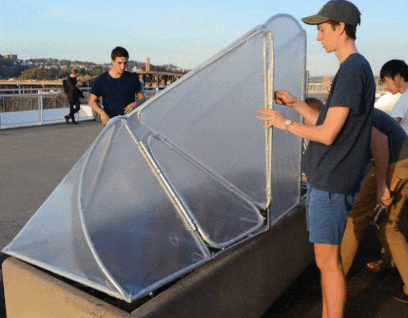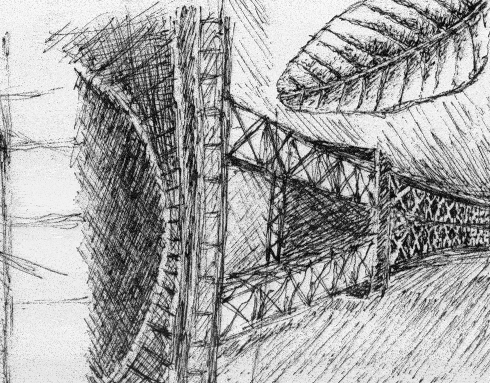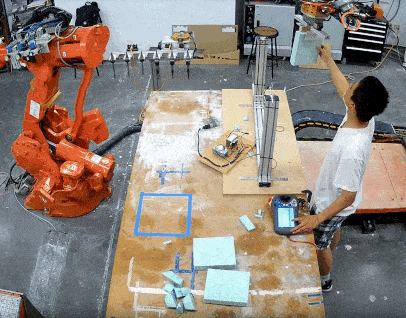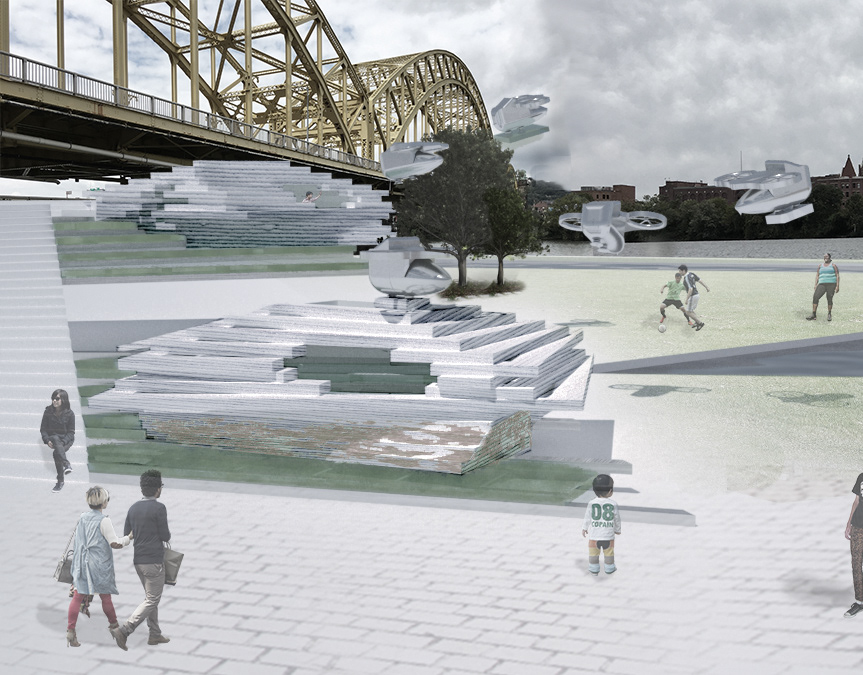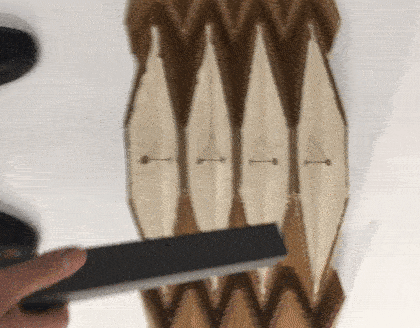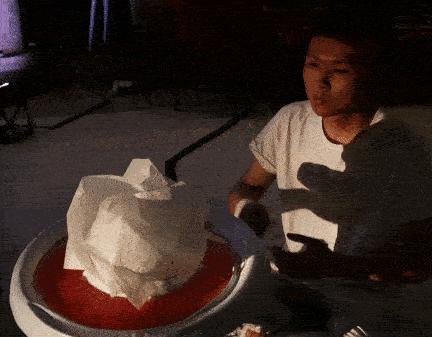A Resource for Community Organizers and Housing Advocates
Partner: Alison Katz
Thesis Advisors: Nina Baird, Stefani Danes, and Stephen Lee
Studio Coordinators: Joshua Bard and Sarah Rafson
Abstract
Although it has experienced increased investment and interest over the past decade, Pittsburgh still struggles with many issues characteristic of post-industrial cities. Since its peak population in 1950, Pittsburgh has lost 57% of its population. This has resulted in a large stock of unoccupied single-family houses while the city struggles to provide adequate affordable housing to those in need. Housing inequity is a wicked problem that will only worsen as we experience the effects of climate change. As populations are displaced due to these implications, Pittsburgh, Pennsylvania is positioned well to become a climate refuge and to experience massive population growth. However, if it does not address its current housing crisis first, climate migration will continue to put more pressure on historically under-served neighborhoods and displace existing low income residents.
Pittsburgh is currently gentrifying as technology companies begin to invest in the city. The existing residents and community organizations are increasingly concerned with being displaced as property values and housing costs begin to rise in previously affordable neighborhoods. How can we bring individuals/organizations across Pittsburgh together to maximize efforts and resources to prevent the displacement of existing low income populations?
By investigating the regulatory framework of historically dis-invested urban neighborhoods, this thesis explores economic models, policies, and building strategies creating a larger system that provides permanent affordable housing and stabilizes existing residents in their homes. Using Garfield as a case study, this resource includes a revision of the Garfield 2030 Plan based on the neighborhood’s needs today and an analysis of potential interventions to promote equitable development. Leveraging the work of existing Pittsburgh non-profit organizations and individuals, we identify barriers and explore ways to capitalize on the potential of transitioning neighborhoods, creating a potential path to the realization of a future that invests in the existing residents.
Pittsburgh is currently gentrifying as technology companies begin to invest in the city. The existing residents and community organizations are increasingly concerned with being displaced as property values and housing costs begin to rise in previously affordable neighborhoods. How can we bring individuals/organizations across Pittsburgh together to maximize efforts and resources to prevent the displacement of existing low income populations?
By investigating the regulatory framework of historically dis-invested urban neighborhoods, this thesis explores economic models, policies, and building strategies creating a larger system that provides permanent affordable housing and stabilizes existing residents in their homes. Using Garfield as a case study, this resource includes a revision of the Garfield 2030 Plan based on the neighborhood’s needs today and an analysis of potential interventions to promote equitable development. Leveraging the work of existing Pittsburgh non-profit organizations and individuals, we identify barriers and explore ways to capitalize on the potential of transitioning neighborhoods, creating a potential path to the realization of a future that invests in the existing residents.
RE_VISION is...
A print and digital resource that is intended to serve community organizers and housing advocates in addressing the lack of affordable housing and stabilization of existing residents in the Garfield neighborhood of Pittsburgh, PA.Map of PIttsburgh highlighting the Garfield neighborhood's location
RE_VISION asks...
how should we approach the growth that Garfield will experience in the near future, considering both the Garfield 2030 Plan and the recent developments in adjacent neighborhoods.
How do we address the lack of affordable housing in Garfield and in Pittsburgh?
How can we insulate existing residents, especially low-income households, from the effects of gentrification as Garfield flourishes?
What existing tools can we apply to tackle these issues?
What stakeholders can we form teams with to address these concerns?
In order to begin answering these prompts, this thesis will RE_VISE the priorities defined in the Garfield 2030 Plan to address new concerns, RE_ENVISION what the future of Garfield can look like and outline a path to implementation of this future, and RE_SPOND to this prompt while encouraging you to join in on the conversation.
Community Plan Covers from the Garfield 2030 Plan and Garfield Green Zone Project
RE_VISE
How has Garfield changed since it made its last neighborhood plan? How does this affect its priorities today?
Garfield has many active community organizations engaged in boots on the ground work, including the Bloomfield Garfield Corporation, Garfield Jubilee, and Open Hand Ministries. In 2010, the Garfield 2030 Plan was developed and it involved many of these organizations within the neighborhood. The plan outlined housing and development plans to promote social, civic, ecological, and economic sustainability in the neighborhood. To this end, it was focused on many diverse aspects of Garfield, ranging from the revitalization of the commercial corridor along Penn Ave, to the greenification of the neighborhood’s streets. More specific to housing, it outlined several metrics, like increasing the ratio between homeowners and renters, while considering broader topics, like maintaining the neighborhood residential character. By engaging with residents to understand their priorities and needs, it gave insight into how to position the neighborhood’s development moving forward.
Since the formation of the community plan, 10 years have passed. Some of the goals initially laid out are tracking well, while others seem to not be progressing more slowly. In that same time, a lot has happened. Several neighborhoods adjacent to Garfield have experienced rapid gentrification with the influx of technology giants and business startups which have brought both opportunity and tension to the city. By understanding the neighborhood’s performance and overlaying new priorities, we can define key areas of improvement.
Since the formation of the community plan, 10 years have passed. Some of the goals initially laid out are tracking well, while others seem to not be progressing more slowly. In that same time, a lot has happened. Several neighborhoods adjacent to Garfield have experienced rapid gentrification with the influx of technology giants and business startups which have brought both opportunity and tension to the city. By understanding the neighborhood’s performance and overlaying new priorities, we can define key areas of improvement.
As growth continues to spread, it will be critical that the neighborhood’s residents are positioned to remain in Garfield and to benefit from investment.
RE_ENVISION
What does an ideal future Garfield look like? How do we get there? What barriers do we face?
To tackle a problem as complex and as large in scale as the lack of affordable housing and the displacement of low-income residents, we used the transition design framework as a way to understand the context. Transition design describes an ideal future, then hypothesizes leverage points to work toward that vision. By first imagining the future of Garfield and understanding the different scenarios it will reach on an idealized path, we can understand what steps can help us get to this vision of Garfield 2030 and beyond.
To breakdown this timeline, we’ve defined four distinct phases, each with tailored strategies aimed at addressing potential concerns and priorities of the community. Embedded into this timeline are periodic evaluations led by community organizations engaging the residents. This allows for more dexterity as changes and developments occur and for the community’s residents to have a louder voice in informing the future of the neighborhood.
To breakdown this timeline, we’ve defined four distinct phases, each with tailored strategies aimed at addressing potential concerns and priorities of the community. Embedded into this timeline are periodic evaluations led by community organizations engaging the residents. This allows for more dexterity as changes and developments occur and for the community’s residents to have a louder voice in informing the future of the neighborhood.
Looking at two of the strategies that we identified, we can understand both what benefits each tool can provide, as well as what barriers may stand in the way of their implementation. In this example, the solar commons model serves as a potential means of addressing the continual operating cost of community land trusts. By considering a larger collection of these tools, we can identify areas of overlap and synergy between different strategies.
RE_SPONSE
What role do designers and architects play in working with communities to build more resilient futures? How can we act to galvanize engagement and interest in these topics at both top down and bottom up levels?
Through our research, we have identified two key issues that Garfield will face moving forwards: preventing the displacement of existing residents in and creating permanently affordable housing for Garfield. With how complex these issues are, it will be important for multiple efforts to coalesce to fully address the issues. Each of the efforts will likely include different stakeholders and key players, but they all address key barriers to the creation of affordable housing and the stabilization of existing residents. Our main contribution is the synthesis of research, case studies, and interviews in the format of an implementation plan that strategizes teams to envision the application of impactful tools. To understand these teams, we have identified the following stakeholder groups:
By then mapping these stakeholders onto an implementation plan, we can begin to understand what patterns form, what members are critical to the success of an intervention, and when they are most critical. We have explored five “lines” that can help address some of Garfield’s challenges regarding equitable development moving forward. For example, the community land trust is applied as the main vehicle for granting community-led and informed control of property and land that is used to create permanent affordable housing. The community land trust can support both affordable renters and homeowners. Another challenge that Garfield will face, in regard to affordable homeownership, is the increase of property taxes which may price homeowners out of the neighborhood. As such, a critical piece to stabilizing the existing population and to creating permanent affordable housing will be advocating for property tax policy changes. These changes can help to prevent the displacement of affordable homeowners from the neighborhood. As part of a larger strategy, these lines identify key strategies working towards the achievement of Garfield’s goals.
To learn more about this thesis, follow this link!

